We Never Stop Learning...

Your Guide to Website Security
Disclosure: We only recommend products we use ourselves and all opinions expressed here are those of JMc Associates.
This post may contain affiliate links that are no additional cost to you,We may earn a small commission. Read full privacy policy here.
Introduction:
In today’s digital age, websites have become a crucial component of our personal and professional lives. A business without a website is like a non-existant business.
From online shopping to business transactions, we rely heavily on websites to perform various tasks. However, with our increased reliance on websites comes the heightened risk of security breaches. Website security is a critical aspect of any online presence, as it helps protect sensitive data, maintain user privacy, and prevent cyber attacks. In this article, we will discuss the importance of website security, current challenges in website security, and the technologies that can be implemented to safeguard websites from threats.

1. What is Website Security?
Website security refers to the measures taken to protect a website from unauthorized access, data theft, and other malicious activities. Websites face a range of security threats. A breach in website security can have severe consequences, ranging from financial loss to damage to reputation and legal liability.
Examples of website security threats include:
Hacking: unauthorized access to a website’s system to steal data or modify content.
Phishing: tricking users into sharing their login credentials or other sensitive information.
Malware: malicious software that can infect a website’s system and steal data or cause damage.
DDoS attacks: overwhelming a website’s server with traffic to disrupt normal operations.
A website security breach can have a significant impact on website owners and users alike. For example, a data breach can lead to identity theft, fraud, and financial loss for users.
To prevent security breaches, various measures can be implemented. These include:
Forcing Admins and users to construct strong and unique passwords and regularly changing them.
Regularly updating website software and plugins to ensure they are secure.
Using SSL/TLS certificates to encrypt data transmission between the website and the user’s browser.
Implementing firewalls and intrusion prevention systems to block unauthorized access.
Performing regular security audits and vulnerability assessments.
Overall, website security is a critical aspect of any online presence. It helps protect sensitive data, maintain user privacy, and prevent cyber attacks. By understanding the various threats to a buisness’s website and implementing appropriate security measures, website owners can safeguard their websites and protect themselves and their users from potential harm.

2. Why Is Website Security Important?
Website security is essential for various reasons, ranging from protecting sensitive data to maintaining user privacy. Cybercrime is only increasing globally, and websites are a prime target for cybercriminals. One significant reason is websites often handle sensitive information, such as credit card details, personal identification information, and confidential business data.
In addition to protecting sensitive data, website security is also critical for maintaining user privacy. Website visitors have a reasonable expectation that their personal information will be kept secure and not shared with unauthorized parties. Poor website design can result in unauthorized access to user information, leading to a loss of trust and reputation damage.

Website security cannot be an afterthought. It must be inherent in the overall design of the site. By prioritizing website security, individuals and businesses can safeguard their online presence and protect themselves from potential harm.
3. Current Challenges in Website Security
The constantly evolving nature of technology, coupled with the increasing sophistication of cybercriminals, presents a range of challenges in website security. Some of the current challenges in website security include:
Vulnerability of outdated software: Websites using outdated software and plugins are more susceptible to security breaches. As technology advances, vulnerabilities are discovered, and updates are released to patch these vulnerabilities. Websites that do not keep up with these updates are at risk of being compromised.
The complexity of web applications: Business websites are extremely complex, with the use of various web applications and third-party integrations. Each of these applications and integrations presents a potential vulnerability that cybercriminals can exploit.
Rise of mobile devices: As recently as November 2022, 60.28 percent of all web traffic came through mobile phones. A decade earlier (2012) this number was only 10.88 percent. With the increasing use of mobile devices, websites must be optimized for mobile use. However, mobile devices also present unique security challenges, such as the risk of mobile malware and their use of unsecured public Wi-Fi networks.
The sophistication of cybercriminals: Cybercriminals are becoming more sophisticated in their tactics, making it more challenging to detect and prevent security breaches. They use various techniques such as social engineering and advanced malware to gain access to sensitive information. In most cases, these are not lone actors. There is an entire underground economy dedicated to infiltrating business websites for Intellectual property, financial information, including credit cards, personal Identifiable information (PII) and health records. This data is then packaged and sold on black markets for malicious use.
Insider threats: Insider threats, such as disgruntled employees or contractors, can pose a significant risk to website security. They have authorized access to sensitive data and systems and can misuse this access for malicious purposes.
In some instances state funded bad actors may target employees who have weak home security, blocking the employee’s access to their bank accounts as ransom in exchange for insider data from the employee’s company. When faced with missing a mortgage payment, or being left without access to funds, the targeted employee becomes the insider threat out of fear of loss.
To address these challenges, website owners must stay up-to-date with the latest security trends and implement appropriate security measures. This includes regular updates to software and plugins, using SSL/TLS certificates to encrypt data, implementing firewalls and intrusion prevention systems, and conducting regular security audits and vulnerability assessments. Additionally, implementing employee training and background checks can help reduce the risk of insider threats.
4. Examples of high-profile website security breaches
Over the years, several high-profile website security breaches have occurred, resulting in significant financial and reputation damage for the affected companies. Some examples of these breaches include:
Capital One (2019)
The individual responsible for the notorious 2019 Capital One data breach, a Seattle-based tech worker aged 36, has been found guilty on seven counts relating to the theft of the data. Under the hacker alias "erratic," Paige Thompson, who was an Amazon Web Services (AWS) engineer until 2016, gained access to over 100 million credit applications stored in an improperly configured Amazon Web Services storage bucket in the cloud. She was apprehended soon after Capital One traced the unauthorized activity to her and notified the FBI. These charges carry a maximum sentence of 20 years imprisonment.
Marriott International (2018)
In 2018, Marriott International suffered a data breach that exposed the personal information of approximately 500 million guests, including names, addresses, phone numbers, and passport numbers. The breach was caused by a vulnerability in the company's guest reservation database.
Equifax (2017)
One of the largest credit bureaus in the US, Equifax, suffered a data breach in 2017 that exposed the personal information of approximately 147 million people, including names, social security numbers, birth dates, and addresses. The breach was caused by a vulnerability in the company's web application framework, which was left unpatched.
Yahoo (2014-2014)
Yahoo suffered a series of data breaches that began in 2013 and were not publicly disclosed until 2016. The breaches exposed the personal information of all 3 billion of Yahoo's users, including names, email addresses, dates of birth, and encrypted passwords.
Target (2013)
In 2013, the US retailer Target suffered a data breach that exposed the personal and financial information of approximately 110 million customers, including credit card numbers and CVV codes. The breach was caused by a vulnerability in Target's payment system, which was exploited by cybercriminals.
These high-profile breaches illustrate the severity of website security threats and the potential consequences of a breach. They also demonstrate the need for website owners to implement appropriate security measures to protect their websites and users from potential harm.
5. Technologies to Implement for Website Security
SSL/TLS Certificates
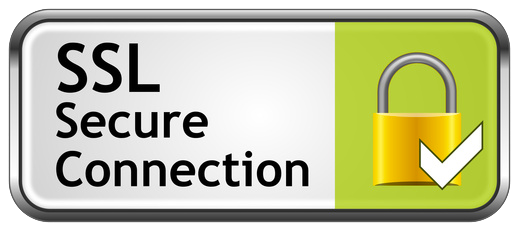
SSL/TLS certificates are used to encrypt data transmitted between a website and its users. They ensure that data is transmitted securely and prevent it from being intercepted by cybercriminals. SSL/TLS certificates work by establishing a secure connection between the website and the user’s browser, which encrypts the data being transmitted. The benefits of SSL/TLS certificates include increased user trust, improved search engine rankings, and protection against man-in-the-middle attacks. SSL certificates don’t have to be costly or hard to implement for the small business owners. Most hosting companies will offer a free SSL certificate for your site when you purchase a plan that includes a dedicated IP address. There are other options as well by using a Content Delivery Network (CDN) that can also be inexpensive and easy to implement.
Firewalls and Intrusion Prevention Systems (IPS)
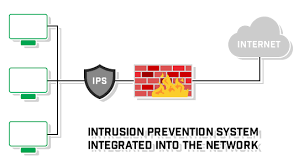
Firewalls and IPS are used to monitor and block unauthorized access to a website. They can detect and prevent various types of attacks, such as SQL injection, cross-site scripting (XSS), and distributed denial-of-service (DDoS) attacks. Firewalls work by filtering network traffic and blocking unauthorized access, while IPS monitors network traffic for signs of suspicious activity and blocks any detected threats. The benefits of firewalls and IPS include increased security, reduced risk of data breaches, and improved network performance. However, firewalls and IPS can also be expensive and require ongoing maintenance and updates.
Two-Factor Authentication (2FA)
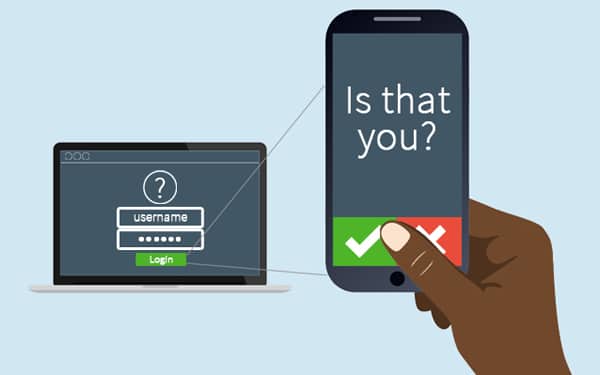
2FA adds an extra layer of security to user authentication by requiring users to provide two types of authentication credentials, such as a password and a one-time code sent to their mobile device. This helps prevent unauthorized access to user accounts, even if the user’s password is compromised. The benefits of 2FA include increased security, reduced risk of data breaches, and improved user trust. However, 2FA can be complex to implement and can lead to user inconvenience. Some of the more recent advances, however, have helped to streamline the implementation of 2FA, allowing users to easily utilized this technology.
Web Application Firewalls (WAF) and the use of Content Delivery Networks (CDNs)
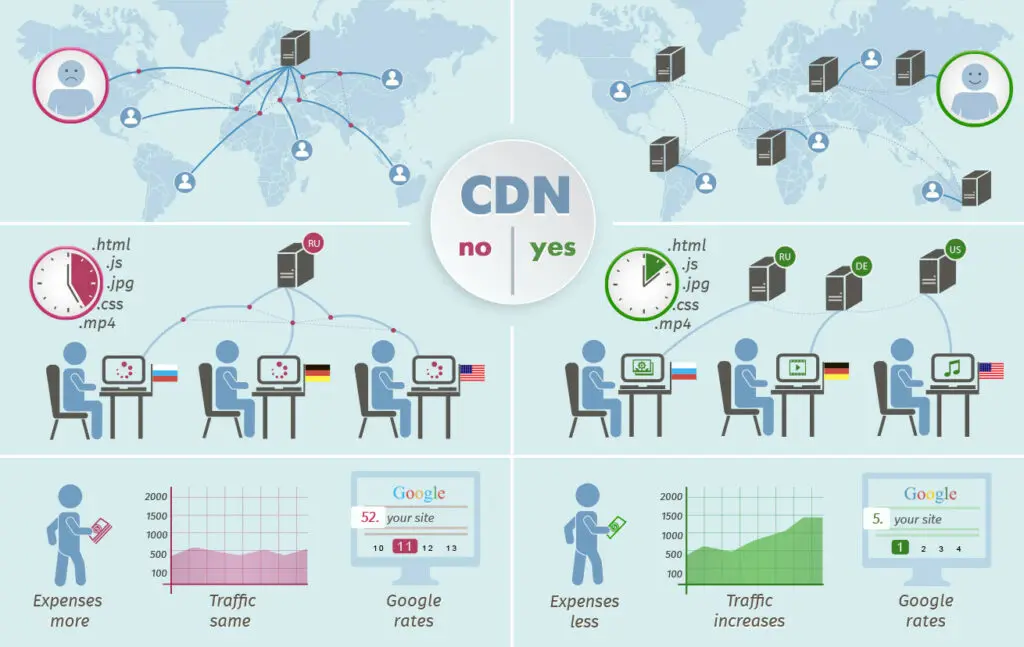
WAFs are designed to protect web applications from various types of attacks, such as SQL injection and cross-site scripting (XSS). They analyze incoming traffic and block suspicious requests. WAFs work by filtering incoming traffic and blocking any requests that match predefined patterns of suspicious behavior. The benefits of WAFs include increased security, reduced risk of web application attacks, and improved user trust.
A Content Delivery Network (CDN) is a distributed network of servers that delivers content to users based on their geographic location. Rather than all traffic having to point to a single sie for content. CDNs are often used to improve website performance by reducing latency and increasing website speed. However, CDNs can also be used as an alternative and cost-effective method for securing DNS and WAFs.
CDNs can be used to provide an additional layer of security for websites by caching website content and distributing it to users from multiple servers. This can help to mitigate the impact of DDoS attacks and other types of cyber attacks by distributing the traffic across multiple servers. In addition, some CDNs offer security features such as SSL encryption, web application firewalls, and DDoS protection as part of their service offerings.
Book a call with us to discuss moving your DNS to a CDN and configuring security protections before they hit your website server!
CDNs can also be a cost-effective alternative to traditional DNS and WAF solutions. By using a CDN, website owners can offload some or all of the traffic to the CDN servers, reducing the load on their own servers and potentially reducing the cost of their own infrastructure. In addition, some CDNs offer pay-as-you-go pricing models, which can be more cost-effective for smaller websites that don't require a large amount of traffic. We offer a one-time setup of $250 to move your DNS to a CDN and configure WAF rules, redirects, and country blocking if necessary.
By moving your DNS to a CDN and configuring tunneling between the CDN and your website server, you can prevent exposing the actual IP address of your website's server. Implementing corresponding Origin Server SSL certificates between your website and the CDN edge network, further reduce attacks against your website directly and prevent attackers from circumventing the CDN network to get to your website directly.
In conclusion, CDNs can be a cost-effective and useful tool for website security. By leveraging the caching and distribution capabilities of CDNs, website owners can provide an additional layer of security for their websites. This can potentially reduce the cost of their own infrastructure. In addition, website owners can hide their website server’s real IP address by implementing tunneling to the CDN. Additionally, use SSL certificates between the CDN and the origin server to prevent attackers from circumventing the CDN and attacking your website directly.
6. Best Practices for Website Security

Implementing website security best practices is crucial for protecting your website from cyber-attacks and maintaining user trust. Here are some best practices for website security:
Use Strong Passwords:
Strong passwords are essential for protecting your website from brute-force attacks. Use a combination of uppercase and lowercase letters, numbers, and symbols to create strong passwords.
Regularly Update Software and Plugins:
Keeping your website software and plugins up-to-date is critical for maintaining website security. Updates often contain security patches that address vulnerabilities in the software.
Use SSL Encryption:
SSL encryption is essential for protecting sensitive data such as login credentials, credit card information, and personal information. Install an SSL certificate on your website to encrypt the data that is transmitted between your website and your users. it’s almost impossible to deploy a website without SSL today. Especially if you’re an e-commerce site that is offering any type of shopping cart. An SSL certificate is mandatory as well as a dedicated IP address.
Use Web Application Firewalls (WAF):
A WAF is a security solution that monitors and filters incoming traffic to your website. It can help to prevent cyber attacks such as SQL injections and cross-site scripting attacks. You can easily implement a WAF solution by moving your DNS to a Content Delivery Network (CDN).
Country Blocking:
If your website and business only serve specific countries, it’s best to block the IP addresses of the countries you do not serve. It’s also a best practice to block countries that are known for their cyber attacks unless your business is involved with those countries. You can also do the reverse and only “Allow” from countries you do business in, depending on which list is longer or shorter. This is another feature of using a CDN.
Regularly Backup Your Website:
Regularly backing up your website is important for ensuring that you can recover your website in case of a cyber-attack or other disaster.
JMc Associates offers a backup solution for WordPress sites that easily allows you to set a regular backup schedule, restore your site, and migrate your entire website if you need to change hosting companies. Check out Updraft Plus here.
Updraft Plus offers a myriad of storage solution connections to store your backups.
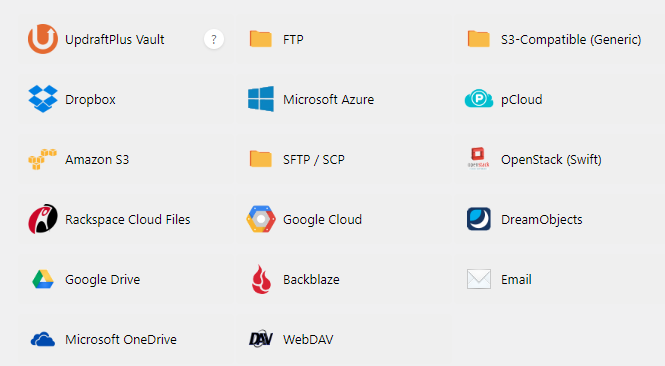
Use Two-Factor Authentication:
Two-factor authentication adds an extra layer of security to your website login process by requiring users to enter a second factor such as a code derived from an app or an SMS message.
Conduct Regular Security Audits:
Regularly conducting security audits can help you identify vulnerabilities in your website and address them before they are exploited by cyber attackers.
In Summary:
Implementing these best practices can help to protect your website from cyber-attacks and maintain user trust. It's important to regularly review your website security practices and update them as necessary to ensure that your website remains secure.
By staying up-to-date with the latest security trends, implementing best practices, and conducting regular security audits and vulnerability assessments, website owners can help prevent security breaches and minimize the impact of any potential breaches that do occur.


